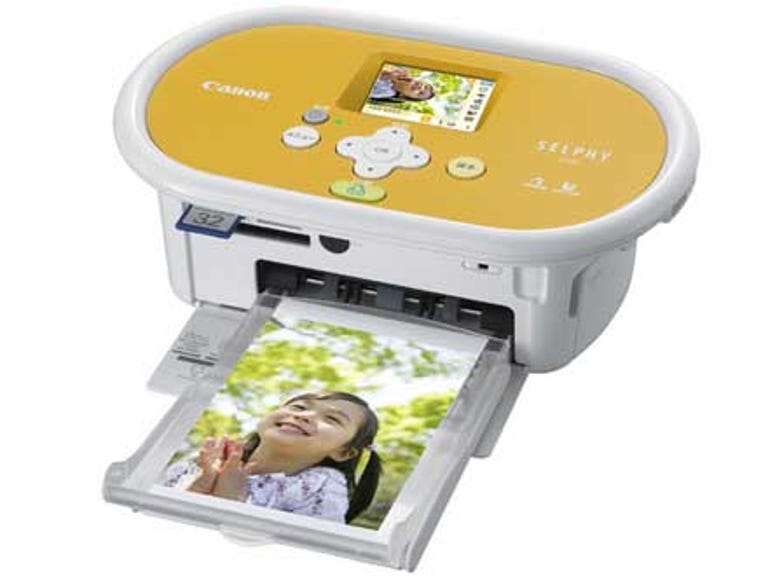 Why You Can Trust CNET
Why You Can Trust CNET Canon Selphy CP770 review: Canon Selphy CP770
The Canon Selphy CP770 is a neat, little dye-sublimation printer that includes a bucket for easy travel, but the battery pack which would make it totally portable is not included.
Design
The CP770 stands out from the crowd in that it is essentially a two-piece printer and bucket set. The plastic bucket fits underneath the printer for storing paper and ink. It also has a built-in handle for carrying the printer on the run. The whole package seems very travel-friendly, but there is a caveat: the printer can't run wirelessly unless you purchase an optional battery pack and Bluetooth adapter, both of which are sold separately.
The Good
The Bad
The Bottom Line
The body of the printer is a slimmer rectangle with a covered panel that reveals a port for the external paper tray, an IrDA port, and slots for SD, Memory Stick and Compact Flash cards. The proprietary ink cassette fits into a protected bay on the right side of the printer. An external power adapter plugs into the back of the device, but it lacks a rechargeable battery that would make the printer wireless-ready out of the box.
The accompanying bucket is made of durable, moulded plastic and matches the white colour scheme of the printer. It also has a built-in handle as well as two light green tabs that lock onto the printer for safe travel. Inside the bucket, you'll find slots and labels to organise and store the power adapter brick and a few extra paper/ink cassettes. As a whole, the bucket is large enough to accommodate everything you need to take the printer with you.
The control buttons are made from rubber and sit underneath a bright 2.5-inch TFT colour display. The on-screen home menu is easy to read and uses several icons to display the current settings. Picture editing is narrowed down to an image optimiser and five colour presets: Vivid, Neutral, PositiveFilm, Sepia and Black/White. The print settings also let you automatically correct red-eye, insert a date stamp and change the page layout (up to eight images per page).
Features
The CP770 uses dye-sublimation ink technology to heat-transfer images onto Canon's proprietary paper; Canon sells different media options, including greeting cards, postcards, and wallet-style credit cards. The dye-sublimation printing process is different from your typical inkjet; the paper makes four passes through the machine: the first three lay down the base colours (cyan, magenta, yellow) and the last pass places a thin overcoat on the image to prevent discolouration and extend durability. Canon tells us the ink in one cartridge should be more than enough to last through a pack of paper. The average cost per prints works out at AU$0.39, an acceptable cost for a dye-sub print.
Performance
The interface could use some improvement in usability. First, there's no way to view more than one image at a time; you can either print all the photos on the card at once or scroll through the entire collection and manually specify which pictures you want to print. Also, the small icons on the picture screen that represent the current settings are difficult to decipher without peeking at the manual — at least until you've used the printer long enough to memorise their meanings.
Dye-sublimation printers are usually slower than inkjet and laser printers due to the amount of time it takes for the ink to cool down once it coats the paper. For our speed tests, we connected the printer to a desktop using a USB cable in order to standardise the average print speed. The Selphy CP770 printed a photo at an average rate of 0.79 pictures per minute, a score faster than last year's Selphy CP740, Epson's PictureMate Pal PM200, and Epson's PictureMate Snap. These types of printers are marketed as fast, easy-to-use printers that people can print with at social gatherings immediately after taking a photo, and we're impressed that Canon is still ahead of the competition. The Selphy handled a wide range of colour with precise detail and separation. Our pictures had a soft feel to them and could use a warmer tone, but we feel comfortable recommending the CP770 for the amateur photographer and home user.
Service and support
Canon includes a one-year warranty with the Selphy CP770, with toll-free phone and Web support available as well. The Canon website contains accessories, manual downloads, driver updates, and additional technical support.


